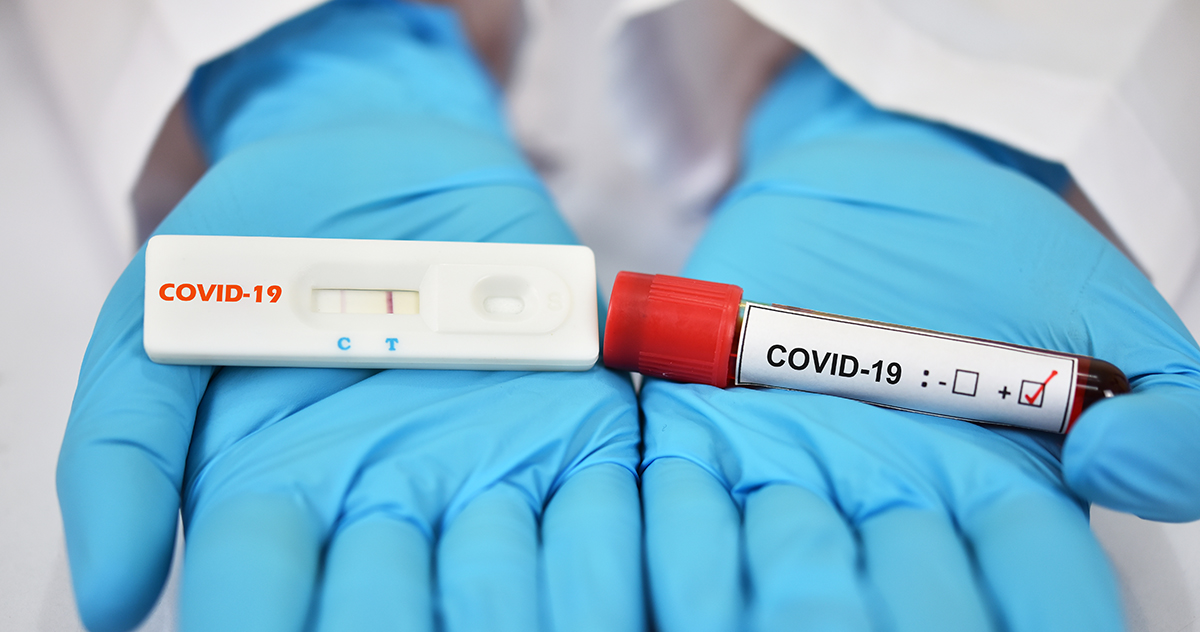
PCR vs. rapid COVID-19 test: What’s the difference?
Getting tested if you’re experiencing symptoms or have been exposed to COVID-19 is the first step against stopping the spread of the virus.
When to test for COVID
Schedule a COVID-19 test
Knowing when to test for COVID is important.
- If you have symptoms, test immediately.
- If you were exposed to COVID-19 and are not experiencing any symptoms, wait at least five days after your exposure before testing. If you test too early, you may be more likely to get an inaccurate result.
If you test positive for COVID-19, isolate and take precautions to protect others from getting infected.
- Tell people you had recent contact with that they may have been exposed.
- Monitor your symptoms. If you have experience serious illness, seek emergency care immediately.
- Consider contacting your health care provider to learn about that you may qualify to receive. Treatment must be started within several days after you first develop symptoms to be effective
Types of COVID-19 tests
There are two types of COVID-19 tests: the polymerase chain reaction (PCR) test and the antigen test, known as the rapid test. Both tests require a sample from the patient, usually a nasal swab.
PCR test
How it works
The PCR test takes a sample of ribonucleic acid (RNA) and “amplifies” it with the help of lab technologies. Amplifying RNA helps to make even small traces of the COVID-19 virus visible in the test sample. Even if you have a small trace of the virus in your system, the PCR test will detect it.
Benefits
“PCR tests are more reliable and accurate due to testing the specific genetic material of the virus, eliminating the interference from other viruses,” said Heather Seyko, a Laboratory Services manager for OSF HealthCare.
Drawbacks
While a PCR test is the preferred method of detecting COVID-19, it must be done by a health care provider. These tests don’t produce immediate results, which means you may be waiting a few days to know if you’re positive or negative.
The Centers for Disease Control and Prevention notes while tests are best used early in the course of illness to diagnose COVID-19, they can’t evaluate the duration of infectiousness. PCR tests sometimes can stay positive for weeks after you’ve had COVID. This is because the PCR test is so sensitive it can detect even dead virus.
Antigen test
How it works
The rapid test, called an antigen test, checks for proteins that are found on the outside of the virus.
The antigen test mimics what antibodies do. Antibodies are the “good guys” that attach to the antigen protein (the “bad guys”) and fight the virus. When you give your nasal swab sample, it’s put into a liquid and then onto a test strip.
The test strip acts like an antibody – if there are any COVID-19 antigen “bad guys” in your system, the molecules in the liquid will attach to those antigens, and a line will appear on the test strip. This means you’re positive for COVID-19. If there are no antigens detected in your system, the liquid doesn’t respond and no line will appear, often meaning you are negative for the virus.
Benefits
- Results in about 15 minutes
- Easy enough to do on your own at home. There’s always a little room for user error, but as long as you closely follow the directions, anyone can test themselves with an antigen test.
- Helps slow the spread of contagious viruses like COVID-19 with quicker results
Drawbacks
“Unlike the PCR test, the antigen test can only determine if you have an active virus in your body. The rapid test can’t detect small amounts of the virus or asymptomatic cases as accurately as the PCR test can,” Heather said.
So how accurate are home COVID-19 tests? The rapid test is less accurate and there is a greater chance for a false negative, not a false positive. The test only picks up if the virus is active in your body, meaning asymptomatic cases. If someone doesn’t have any symptoms, those cases are harder to identify with the antigen test.
Choosing a PCR or antigen test
If you’re visiting a health care provider to get tested, it’s likely you won’t get to choose which test you get. This is for a few reasons. First, it could just be a matter of what test is readily available or in greater supply. Second, tests are chosen based on probability of having the virus.
“PCR would be chosen where there is a low likelihood of having the virus, but we want to be certain the patient doesn’t have it. Antigen would be chosen if there is a high probability the patient has the virus (i.e. is experiencing symptoms), and we need to screen the patient as positive or negative,” Heather said.
Getting tested is an important part of slowing the spread of COVID-19. With more accurate results, PCR tests are the preferred way to go, but antigen tests work for rapid results, as well.
Antibody testing
Antibody testing is also available and is designed to identify people who have recovered from the virus.
An antibody test could yield two results:
- If you test positive for antibodies, this means you have been previously infected with COVID-19, and you have recovered. This does not necessarily mean you are immune from contracting the virus again.
- If you test negative for antibodies, this means the lab could not detect antibodies for COVID-19. This means you are still susceptible to the virus.
Your provider might recommend this blood test if you have previously shown symptoms and want to know if they were caused by COVID-19.